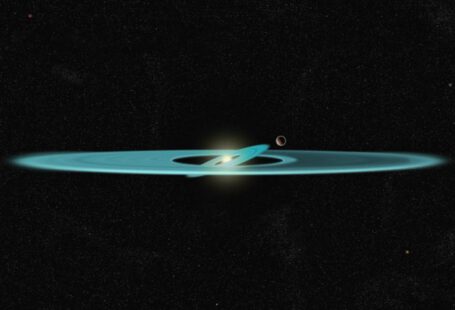Black holes have long fascinated scientists and the general public alike. These mysterious cosmic entities are known for their immense gravitational pull and the ability to devour everything that crosses their path. But what lies in the heart of a black hole? Let’s explore the depths of this enigmatic phenomenon and uncover the secrets it holds.
Understanding Black Holes
Before delving into what lies inside a black hole, it’s important to grasp the basics of their formation. Black holes are created from the remnants of massive stars that have exhausted their nuclear fuel and collapsed under their own gravity. This collapse leads to a singularity, a point of infinite density, at the center of the black hole. Surrounding this singularity is the event horizon, a boundary beyond which nothing can escape the black hole’s gravitational pull.
The Singularity: A Point of Infinite Density
At the heart of a black hole lies the singularity, a concept that challenges our understanding of physics. The singularity is a point of infinite density, where the laws of physics as we know them break down. It is believed to be a region where matter is crushed to an infinitesimal point, devoid of any volume or size. However, our current understanding of physics is unable to explain what occurs at this extreme point.
The Event Horizon: The Point of No Return
Beyond the singularity is the event horizon, the boundary that marks the point of no return. Once an object crosses this boundary, it is trapped within the black hole forever. The event horizon is a sphere surrounding the singularity, and its size depends on the mass of the black hole. The larger the mass, the larger the event horizon. Anything that enters the event horizon is inevitably pulled towards the singularity, where it is crushed into the singularity’s infinite density.
The Spaghettification Effect
As matter gets closer to the singularity, it experiences a phenomenon known as spaghettification. This peculiar effect occurs due to the intense gravitational forces within a black hole. As an object approaches the singularity, the gravitational pull on its near side becomes significantly stronger than on its far side. This difference in gravitational force stretches the object, causing it to become elongated, resembling a strand of spaghetti. Eventually, the object is torn apart into a stream of atoms.
Beyond the Event Horizon: The Unknown
Once an object crosses the event horizon, its fate becomes a mystery. Our current understanding of physics breaks down at this point, preventing us from comprehending what happens inside. Some theories suggest that matter within a black hole is compressed to a state where it ceases to exist as we know it, while others propose the existence of a parallel universe or a wormhole connecting distant parts of space-time. However, these theories are purely speculative and require further research to be confirmed.
Unraveling the Secrets
Studying black holes is no easy task. Their immense gravitational pull makes it challenging for scientists to observe them directly. However, advancements in technology have allowed astronomers to indirectly study black holes by observing their effects on surrounding matter and the radiation they emit. By analyzing these observations, scientists hope to gain a deeper understanding of what lies within a black hole and unlock the secrets it holds.
In Conclusion
The mysteries of black holes continue to captivate our imagination. While we may never know for certain what lies inside these cosmic enigmas, the ongoing research and discoveries made by scientists bring us closer to unraveling their secrets. With each new observation and breakthrough, we inch towards a better understanding of these fascinating celestial phenomena, shedding light on the mysteries that lie within the depths of a black hole.





